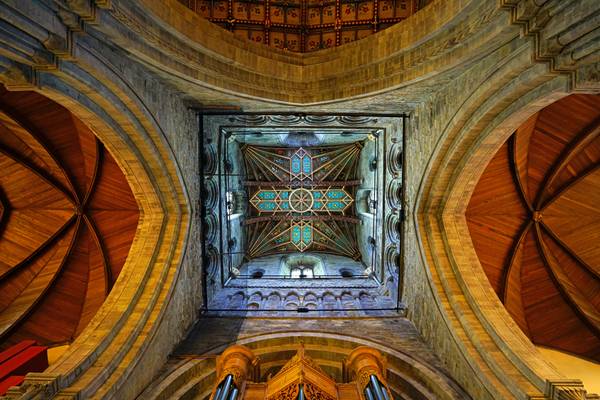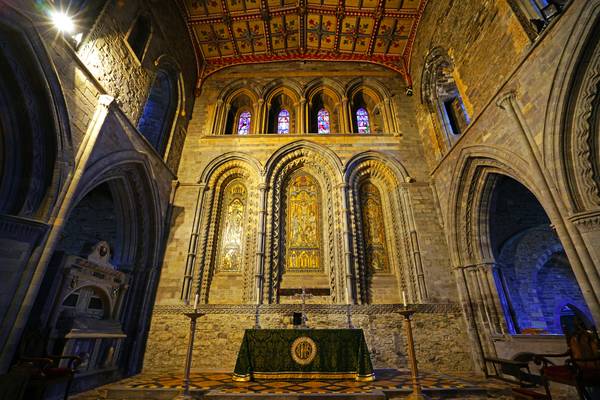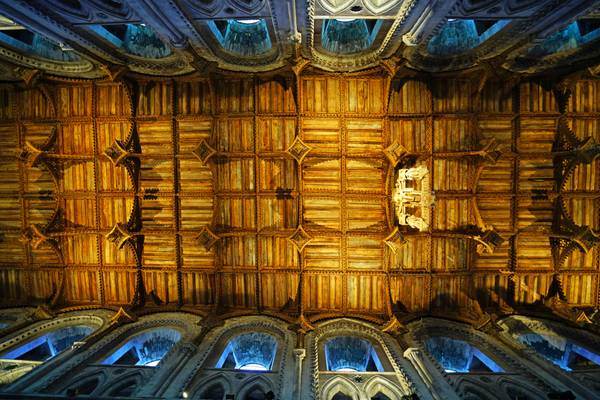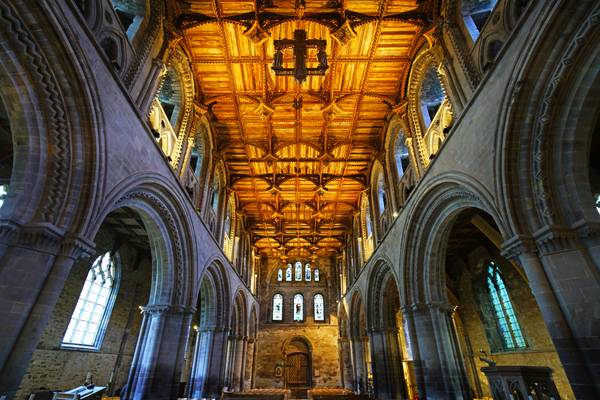
St Davids
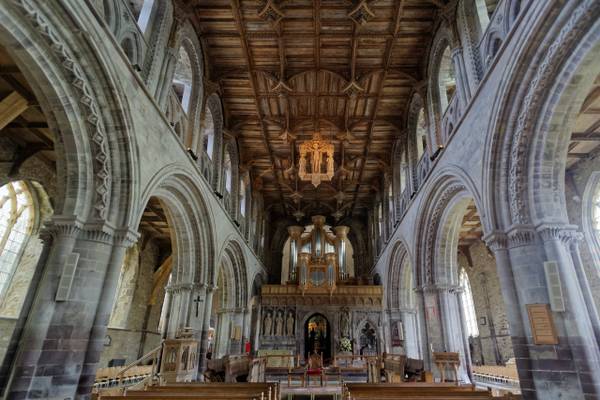
by jim stephenw
Some handheld photos taken using Sony's in-camera D-Range Optimiser function set at Lv3 which can be used to capture RAW images.
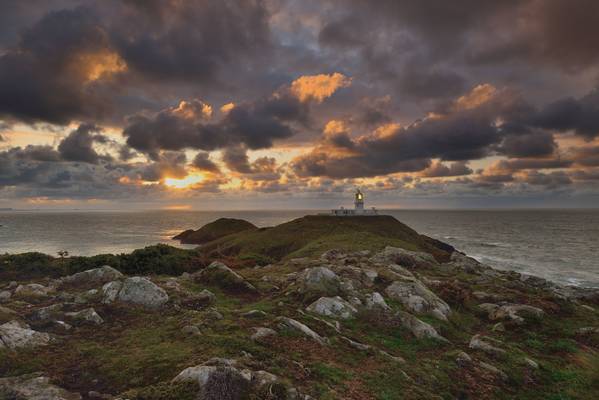
Look west - Strumble Head lighthouse at sunset looking west over the Irish Sea under a dramatic sky.
Pembrokeshire Coast National Park, Wales ...
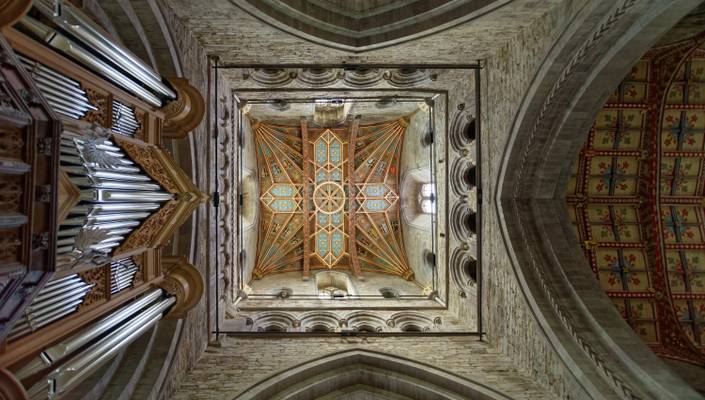
by jim stephenw
Some handheld photos taken using Sony's in-camera D-Range Optimiser function set at Lv3 which can be used to capture RAW images.
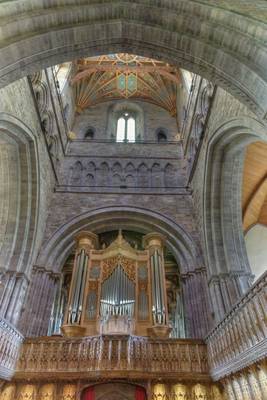
by jim stephenw
HDR image taken inside St David's cathedral, by tone-mapping 3 exposures taken at +2EV, 0EV and -2EV.
St David's Cathedral is situated in St Davids in the county of Pembrokeshire, on the most westerly point of Wales. Built upon the site of St David's 6th century monastery, St David’s Cathedral has been a site of pilgrimage and worship for many hundreds of years and remains a church serving a living community. During the 10th and 11th centuries the cathedral was regularly raided by Vikings arriving from the western seaways. A visitor in the 11th century found only an abandoned site with St David's shrine lost amongst the undergrowth. It is known that in 1089 the shrine had been removed from the church and stripped of the precious metals which had adorned it. In 1115 Bishop Bernard was appointed bishop of St Davids by King Henry I, and in 1123 Bishop Bernard secured a "privilege" from Pope Calixtus II. In 1131 he dedicated a new cathedral and in 1181 work on the present Cathedral was begun.

by Alan Taylor
St Davids Cathedral is situated in St Davids in the county of Pembrokeshire, on the most westerly point of Wales.
A hand-held shot with high ISO and tons of post-processing.
My website: Deep Mono Photography
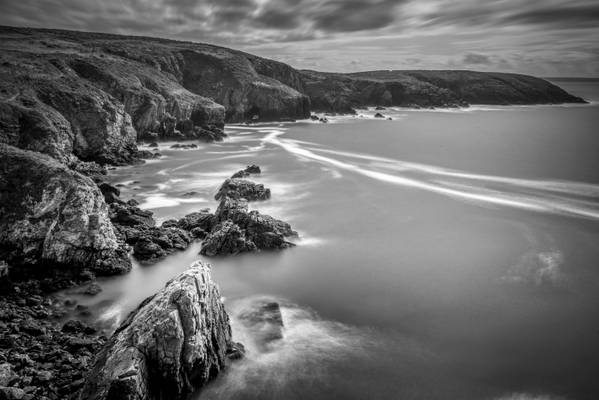
by Alan Taylor
The Pembrokeshire Coast Path National Trail twists and turns its way through 186 miles of the most breathtaking coastal scenery in Britain.
From St Dogmaels in the north to Amroth in the south, the trail covers almost every kind of maritime landscape from rugged cliff tops and sheltered coves to wide-open beaches and winding estuaries.
Lying almost entirely within the Pembrokeshire Coast National Park, Britain's only truly coastal National Park, the trail displays an array of coastal flowers and bird life, as well as evidence of human activity from Neolithic times to the present.
In its entirety the Coast Path represents a formidable physical challenge - its 35,000 feet of ascent and descent is said to be equivalent to climbing Everest, yet it can also be enjoyed in shorter sections, accessible to people of all ages and abilities, with the small coastal villages strung out along its length offering welcome breaks and added enjoyment.
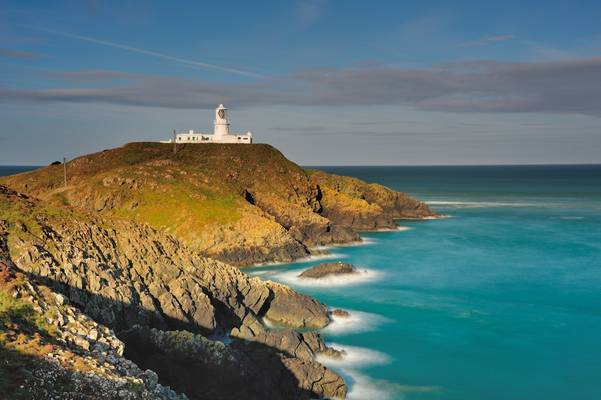
Strumble Head - The lighthouse at Stumble Head looking out over the Irish Sea on a late summer's morning with the magnificent turquoise sea vivid in...
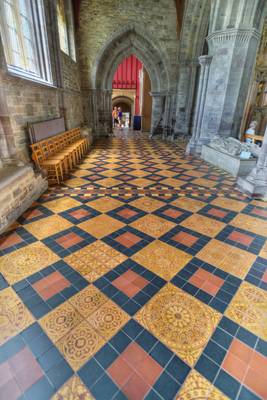
by jim stephenw
HDR image taken inside St David's cathedral, by tone-mapping 3 exposures taken at +2EV, 0EV and -2EV.
St David's Cathedral is situated in St Davids in the county of Pembrokeshire, on the most westerly point of Wales. Built upon the site of St David's 6th century monastery, St David’s Cathedral has been a site of pilgrimage and worship for many hundreds of years and remains a church serving a living community. During the 10th and 11th centuries the cathedral was regularly raided by Vikings arriving from the western seaways. A visitor in the 11th century found only an abandoned site with St David's shrine lost amongst the undergrowth. It is known that in 1089 the shrine had been removed from the church and stripped of the precious metals which had adorned it. In 1115 Bishop Bernard was appointed bishop of St Davids by King Henry I, and in 1123 Bishop Bernard secured a "privilege" from Pope Calixtus II. In 1131 he dedicated a new cathedral and in 1181 work on the present Cathedral was begun.
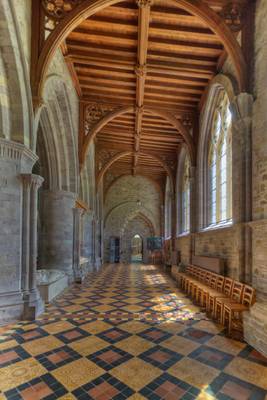
by jim stephenw
HDR image taken inside St David's cathedral, by tone-mapping 3 exposures taken at +2EV, 0EV and -2EV.
St David's Cathedral is situated in St Davids in the county of Pembrokeshire, on the most westerly point of Wales. Built upon the site of St David's 6th century monastery, St David’s Cathedral has been a site of pilgrimage and worship for many hundreds of years and remains a church serving a living community. During the 10th and 11th centuries the cathedral was regularly raided by Vikings arriving from the western seaways. A visitor in the 11th century found only an abandoned site with St David's shrine lost amongst the undergrowth. It is known that in 1089 the shrine had been removed from the church and stripped of the precious metals which had adorned it. In 1115 Bishop Bernard was appointed bishop of St Davids by King Henry I, and in 1123 Bishop Bernard secured a "privilege" from Pope Calixtus II. In 1131 he dedicated a new cathedral and in 1181 work on the present Cathedral was begun.
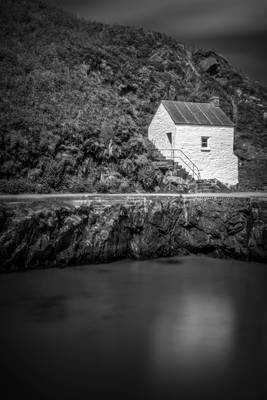
by Alan Taylor
Porthgain is a small coastal hamlet on the north coast of St Davids Peninsula. Once a small commercial harbour used for exporting stone from the nearby quarry, Porthgain is now a very popular tourist centre thanks to a great pub, a super cafe restaurant and excellent art galleries.
Thanks to all Phoide contributors to St Davids!
Most notably Andrey Sulitskiy, jim stephenw and Alan Taylor.
